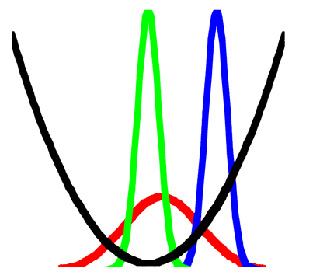
A key concept of the course is that in order to reduce quality loss (black line) in systems exhibiting a lot of variation (red distribution), it is important to first reduce variation (blue distribution) and also to place the distribution on target (green distribution). (Graph by Prof. Daniel Frey.)
Instructor(s)
Prof. Daniel Frey
MIT Course Number
16.881
As Taught In
Summer 1998
Level
Graduate
Course Description
Course Features
Course Highlights
The course includes a substantial, team-based design project. The goal will be to define industrially relevant design projects in SDM sponsor companies and at MIT. Teams will document their efforts in a written report and make a formal presentation of their results.
Course Description
This course was created for the "product development" track of MIT's System Design and Management Program (SDM) in conjunction with the Center for Innovation in Product Development. After taking this course, a student should be able to:
- Formulate measures of performance of a system or quality characteristics. These quality characteristics are to be made robust to noise affecting the system.
- Sythesize and select design concepts for robustness.
- Identify noise factors whose variation may affect the quality characteristics.
- Estimate the robustness of any given design (experimentally and analytically).
- Formulate and implement methods to reduce the effects of noise (parameter design, active control, adjustment).
- Select rational tolerances for a design.
- Explain the role of robust design techniques within the wider context of the product development process.
- Lead product development activities that include robust design techniques.


